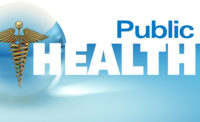Heatstroke is a top killer of kids in cars

The statistics are shocking. On average, one child dies from heatstroke in a vehicle nearly every 10 days in the United States. Since 1998, there have been 760 pediatric vehicular heatstroke deaths – including 18 already this year.
Those numbers – along with the heatwave currently blanketing a large portion of the United States – are prompting the National Highway Traffic Safety Administration (NHTSA) to remind everyone of the dangers of leaving an unattended child in a vehicle. Outside of crashes, heatstroke is the number one vehicle-related killer of children in the United States.
"In almost no time temperatures inside a vehicle can reach deadly levels, which creates a dangerous situation for children who are in a car unsupervised,” said Deputy Administrator Heidi King. “Parents and caregivers are the first line of defense for preventing these tragedies—but everyone in the community has a role to play.”
As part of its current “Where’s Baby? Look Before You Lock” safety campaign, NHTSA has released new radio and digital ads to educate the public and promote mindfulness. The ads will run through August 19.
To help promote social awareness and amplify the conversation about this safety issue, the agency will host a Tweet-up on National Heatstroke Awareness Day, July 31. Every 30 minutes, starting at 7 a.m. ET, the agency will use the hashtags #heatstrokekills and #checkforbaby on all of its social media posts.
While NHTSA encourages innovative solutions to help prevent injuries and fatalities, the agency believes that eliminating these deaths requires education, vigilance, and personal responsibility.
To help prevent these tragic events the agency offers the following safety tips:
For Parents and Caregivers:
- NEVER leave a child in a vehicle unattended.
- Make it a habit to look in the back seat EVERY time you exit the car.
- ALWAYS lock the car and put the keys out of reach.
- If you are a bystander and see a child in a hot vehicle:
- Make sure the child is okay and responsive. If not, call 911 immediately.
- If the child appears to be okay, attempt to locate the parents or have the facility’s security or management page the car owner over the PA system.
- If there is someone with you, one person should actively search for the parent while the other waits at the car.
- If the child is not responsive or appears to be in distress, attempt to get into the car to assist the child—even if that means breaking a window. Many states have “Good Samaritan” laws that protect people from lawsuits for getting involved to help a person in an emergency.
You can help spread our safety message to prevent Child Heatstroke by downloading our safety materials.
And for additional child safety information please visit www.nhtsa.gov/road-safety/child-safety.
Stay connected with NHTSA: Search for open recalls at NHTSA.gov/Recalls | Download the mobile app for Apple or Android devices | Receive recall alerts by e-mail |Facebook.com/NHTSA | Twitter.com/NHTSAgov | Watch 5-Star Safety Ratings crash tests on YouTube.com/USDOTNHTSA.
Looking for a reprint of this article?
From high-res PDFs to custom plaques, order your copy today!





